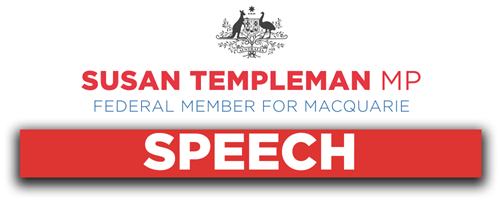
It's probably hard for anyone who wasn't already a teenager or older in the 1980s to imagine how the threat of nuclear war hung over us. The fear that the then USSR and the US were only a hop, skip and a jump from pushing buttons was palpable at times. I remember it well, and I wasn't surprised several years ago when documents were released that showed that there were 10 days in November 1983 when the United States and the Soviet Union nearly started a nuclear war. Documents from the CIA, NSA, KGB and senior officials in both countries revealed just how close we came to mutually assured destruction, really, over a military exercise, which was called Able Archer 83. It simulated the transition by NATO from a conventional war to a nuclear war, and it culminated in the simulated release of warheads against the Soviet Union. That was happening in the early 1980s.
At this time there was also an enormous pressure on South Africa to end apartheid. As a young journalist, I attended the 1986 Commonwealth Heads of Government Meeting in London with Prime Minister Bob Hawke. This was a special meeting held in between the biennial CHOGMs in order to consider the recommendations of the Commonwealth Eminent Persons Group regarding economic sanctions against South Africa. British Prime Minister Margaret Thatcher refused to support mandatory sanctions, and it resulted in a very acrimonious meeting. It was quite an extraordinary event for a young journalist to be covering, especially with Australia leading the charge in support of sanctions, which were ultimately agreed to a year later. So that was the context in the eighties in which South Africa was making its own decision to create nuclear weapons.
Much occurred in the short intervening years. By 1989 President FW de Klerk decided to terminate the program. They'd had six weapons by that stage. This is the only instance in history when a nuclear power has voluntarily renounced nuclear weapons. The 30th anniversary of that decision is coming up in July, and it's one we can be very grateful for. It brings us to where we are now.
The world has enforced multiple treaties, but, from this year, the Treaty on the Prohibition of Nuclear Weapons has not been signed by Australia. The ambition for a world free of nuclear weapons is one that Labor shares. I know it's an ambition that the students at Kindlehill in Wentworth Falls share, too, and I've been pleased to support their call to the government to sign the treaty. Labor is committed to signing and ratifying the treaty, obviously after taking into account the necessary things like effective verification and enforcement architecture, and also working to achieve universal support on it. But right now you have to ask yourself what progress is being made and what role we as a country that is known to be able to help broker complex world negotiations, as we did in the eighties around South Africa, are playing in the progress. I think 'not a lot' is probably the best way to describe it at this moment.
Among the things that have been interesting to see recently are that North Korea has been very active and, in the US, Joe Biden ran on a platform opposing nuclear weapons. But I've seen commentary that his defence budget actually backs two controversial projects put in motion by former President Donald Trump. Obviously, Russia is openly developing new tactical weapons. So I hope the recent meeting between President Joe Biden and Russian President Vladimir Putin in Geneva represents progress and a welcome change in the tense relationship that has existed between those two countries. The summit saw the leaders discussing a range of issues, including nuclear weapons and arms control. The future of global nuclear nonproliferation is really dependent in a lot of ways upon the commitment from both the US and Russia to work towards building agreements and collaborating on limiting and, I would hope, ending nuclear weapons. The two nations together possess over 90 per cent of the world's nuclear weapons.
For Australia, the big question is: what is our role? Australia can and should lead international efforts to rid the world of nuclear weapons, and we can do that by calling on all states that possess nuclear weapons to take measures to lower the chance of a nuclear war. That's something we can be doing.


